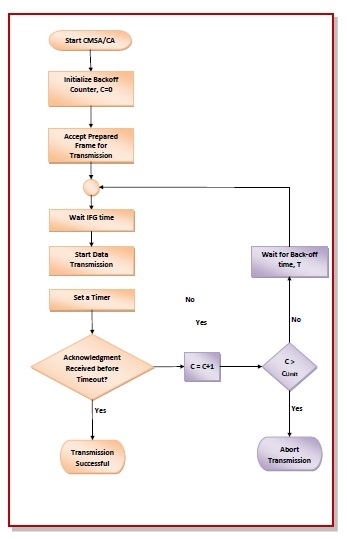
 Data Structure
Data Structure Networking
Networking RDBMS
RDBMS Operating System
Operating System Java
Java MS Excel
MS Excel iOS
iOS HTML
HTML CSS
CSS Android
Android Python
Python C Programming
C Programming C++
C++ C#
C# MongoDB
MongoDB MySQL
MySQL Javascript
Javascript PHP
PHP
- Selected Reading
- UPSC IAS Exams Notes
- Developer's Best Practices
- Questions and Answers
- Effective Resume Writing
- HR Interview Questions
- Computer Glossary
- Who is Who
CSMA with Collision Avoidance (CSMA/CA)
Carrier Sense Multiple Access with Collision Avoidance (CSMA/CA) is a network protocol for carrier transmission that operates in the Medium Access Control (MAC) layer. In contrast to CSMA/CD (Carrier Sense Multiple Access/Collision Detection) that deals with collisions after their occurrence, CSMA/CA prevents collisions prior to their occurrence.
Algorithm
The algorithm of CSMA/CA is:
When a frame is ready, the transmitting station checks whether the channel is idle or busy.
If the channel is busy, the station waits until the channel becomes idle.
If the channel is idle, the station waits for an Inter-frame gap (IFG) amount of time and then sends the frame.
After sending the frame, it sets a timer.
The station then waits for acknowledgement from the receiver. If it receives the acknowledgement before expiry of timer, it marks a successful transmission.
Otherwise, it waits for a back-off time period and restarts the algorithm.
The following flowchart summarizes the algorithms:

Advantages of CMSA/CD
CMSA/CA prevents collision.
Due to acknowledgements, data is not lost unnecessarily.
It avoids wasteful transmission.
It is very much suited for wireless transmissions.
Disadvantages of CSMA/CD
The algorithm calls for long waiting times.
It has high power consumption.

